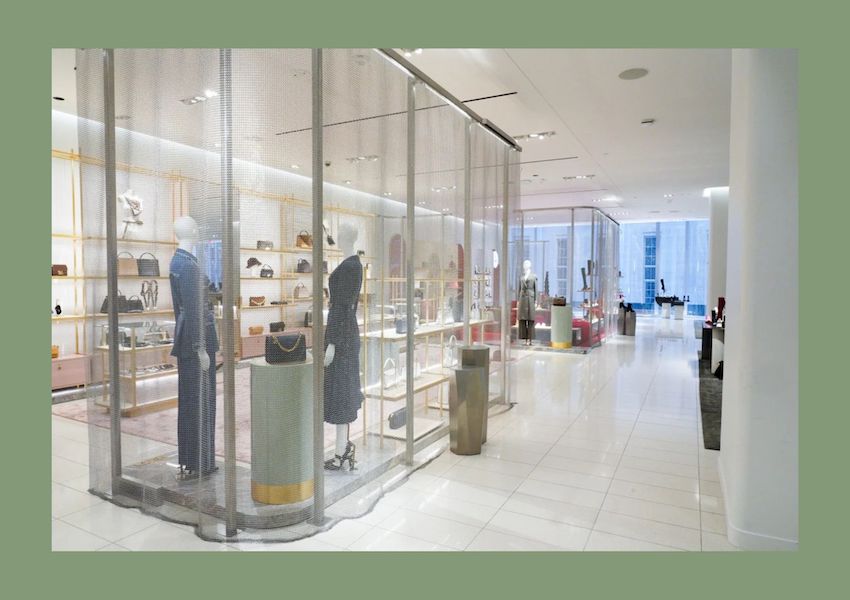How to Approach Retail Buyers and Get Your Product Into Stores

In the dynamic world of retail, capturing the attention of retail buyers is a crucial step toward placing your products on store shelves. Buyers are responsible for finding the hottest designs and must-have products that will delight their customers, and staying ahead of the curve is part of the job description.
The good news is that buyers are always interested in building relationships with brands and discovering new products that will work for their customers. They are used to designers approaching them to work together and get their products into their stores. Pitching retailers at department stores or boutiques is a key step in the retail buyer engagement process, and can be done by email, on the phone, or in person.
Engaging with retail buyers, getting a meeting and successfully securing a purchase order from a store requires careful planning and thought-out strategies that will put your brand in the best light and stand out from the competition. Using a digital showroom such as The Folklore or other wholesale platforms to connect with retailers looking for products like yours is a great first step.
From crafting a compelling pitch to learning the wholesale lingo, below are a few more steps that brands and sales reps can take to approach retail buyers and foster strong relationships that lead to wholesale orders.

Network and build relationships
Connect with industry professionals on social media such as Instagram or LinkedIn, attend networking events, and seek guidance from experienced entrepreneurs. Not sure who you need to speak to? Scour retailers’ websites for the right team member or call them up to get the information you need. Read up on our case studies from Connect brands that have successfully launched their products in retail stores and e-commerce sites, such as Bôhten, V.BELLAN and Florian London. Following their examples and learning from their experiences could provide a pathway to getting buyers to stock your products.
Participate in relevant trade shows and industry events to meet retail buyers face-to-face and showcase your products. “Trade shows are great for also scoping out brands and products across various price points, and to see what tools other brands are using,” says McKenna Semin, the Senior Product Merchandiser for luxury brand Proenza Schouler. She also advises to “put on the mind of a wholesaler so you can anticipate the needs of your potential partner. This will make them feel cared for, and show how serious you are about your business.”
You can also invite retailers to visit your digital showroom or offer to send them samples to let them experience the quality and craftsmanship of your products firsthand. When you secure a meeting with a retail buyer, be well prepared. Have your pitch, product samples, pricing information, and a clear understanding of how your product fits into their store.
Prepare a compelling pitch
Craft a succinct and compelling pitch that clearly conveys your brand identity, unique selling points, and why your product aligns with the retailer’s target audience. This starts with researching retailers and identifying the stores that align with your brand’s values and product category. Explore their product offerings, pricing, and any current gaps in their inventory that your product can fill.
For a high-quality product presentation, invest in professional product photography and create a visually appealing line sheet or catalog to showcase your designs effectively. After meetings or presentations, send a follow-up email or message to express your appreciation and reiterate the key points of your pitch.
Have a clear sales strategy
Develop a comprehensive sales strategy that includes information on your audience, sales goals, and the tactics you will use to reach those goals. Price your products competitively by understanding the market and your competitors. Offer a pricing strategy that aligns with the retailer’s pricing structure. “Whatever retailer or market you’re looking to get your brand into, it’s important to observe the price points there, which will help you establish a baseline,” says Gina Lewis, founder of FRTWN.
Speak the wholesale language
Just like every other industry, the wholesale retail business has its own terminology and vocabulary, and it’s important for brand and sales reps to know the right words when meeting with potential partners. From SKU to MOQ, it’s helpful to know what each terms means when it comes up, so that communications with retailers can go smoothly. Use our Wholesale Glossary as a resource for learning the terminology.
Always be professional
Maintain a professional website and active social media profiles to demonstrate your brand’s credibility and reach, as retail buyers often research potential brands online. Provide excellent customer care and show retailers that you’re committed to supporting them with any inquiries, issues, or marketing collateral they may need to sell your products effectively.
